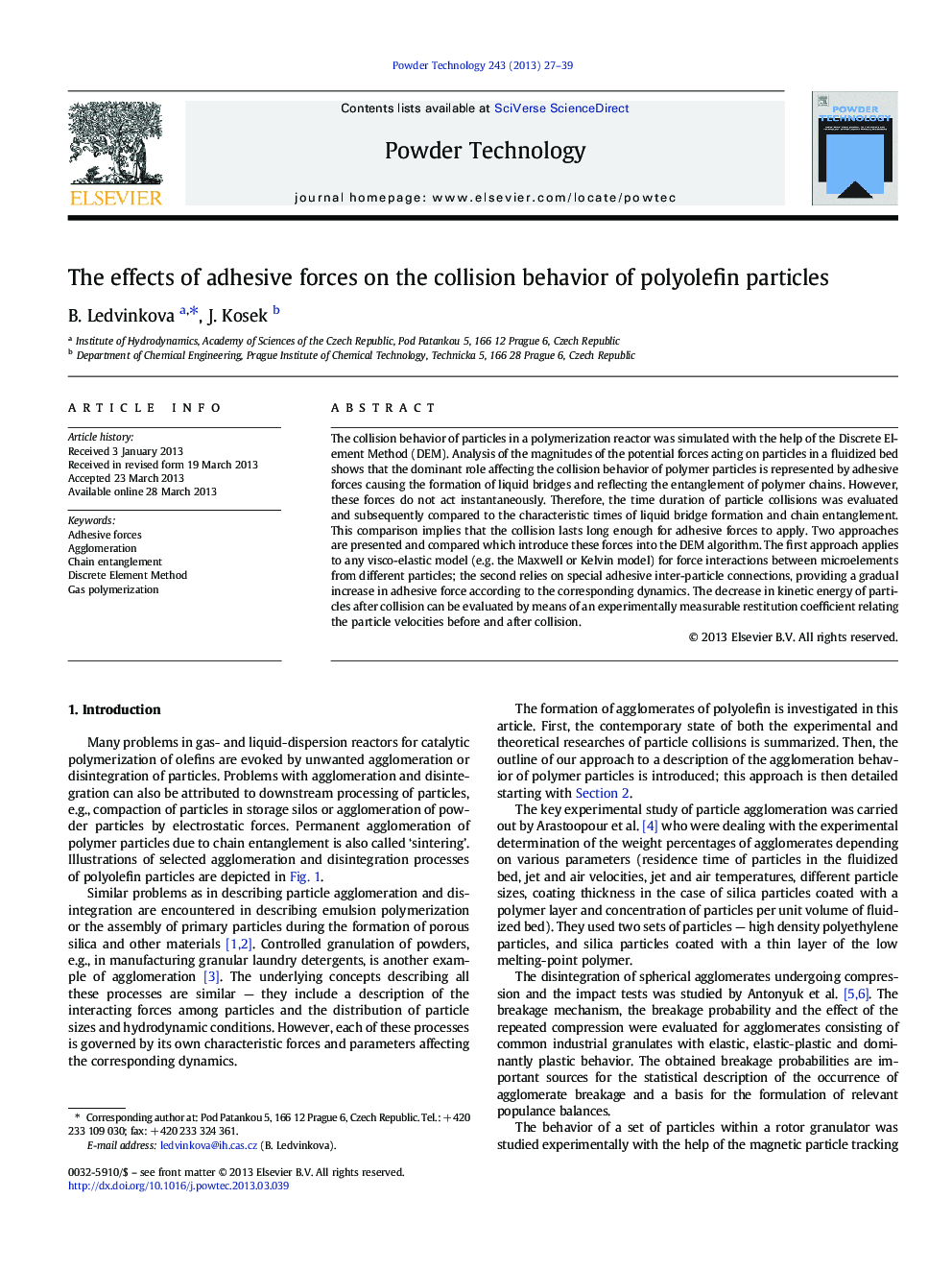| Article ID | Journal | Published Year | Pages | File Type |
|---|---|---|---|---|
| 236562 | Powder Technology | 2013 | 13 Pages |
•DEM model of particle collision with incorporated adhesive forces is presented.•Realistic time of polymer particle collision is obtained by the DEM simulation.•The effect of heterophase structure on collision time is studied.•Extended DEM model enables modeling of inelastic collision or of agglomeration.
The collision behavior of particles in a polymerization reactor was simulated with the help of the Discrete Element Method (DEM). Analysis of the magnitudes of the potential forces acting on particles in a fluidized bed shows that the dominant role affecting the collision behavior of polymer particles is represented by adhesive forces causing the formation of liquid bridges and reflecting the entanglement of polymer chains. However, these forces do not act instantaneously. Therefore, the time duration of particle collisions was evaluated and subsequently compared to the characteristic times of liquid bridge formation and chain entanglement. This comparison implies that the collision lasts long enough for adhesive forces to apply. Two approaches are presented and compared which introduce these forces into the DEM algorithm. The first approach applies to any visco-elastic model (e.g. the Maxwell or Kelvin model) for force interactions between microelements from different particles; the second relies on special adhesive inter-particle connections, providing a gradual increase in adhesive force according to the corresponding dynamics. The decrease in kinetic energy of particles after collision can be evaluated by means of an experimentally measurable restitution coefficient relating the particle velocities before and after collision.
Graphical abstractFigure optionsDownload full-size imageDownload as PowerPoint slide
